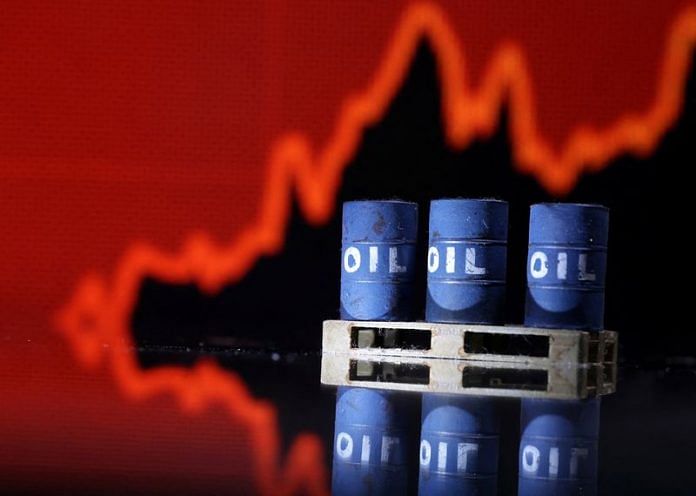By Natalie Grover and Deep Kaushik Vakil
LONDON (Reuters) -Global benchmark Brent slipped on Monday though it remained above $86 a barrel as traders turned their focus back to inflation with tensions in the Middle East having so far left actual oil supplies unperturbed.
Brent futures were down 55 cents to $86.74 a barrel by 1020 GMT.
The front-month U.S. West Texas Intermediate (WTI) crude contract for May, which expires on Monday, fell 33 cents to $82.81 a barrel in tepid trade. The more active June contract dipped 52 cents to $81.70 a barrel.
Both benchmarks spiked more than $3 a barrel early on Friday, after explosions were heard in the Iranian city of Isfahan in what sources described as an Israeli attack.
Gains dissipated after Tehran played down the incident and said it did not plan to retaliate, a response that appeared gauged towards averting a region-wide war.
The market reaction is yet another example that it is only reasonable to expect a protracted oil price rally if the Strait of Hormuz – the world’s most important oil artery carrying a fifth of global supply – was disrupted or Saudi Arabia directly drawn into the conflict, noted Tamas Varga of oil broker PVM.
Geopolitical risk premiums tend not to last if supply is not actually disrupted, added UBS strategist Giovanni Staunovo, adding that the high spare capacity of a few oil-producing countries can compensate for any supply disruptions.
Meanwhile, plentiful supplies of some of the biggest crude grades are limiting the impact on oil futures of conflict in the Middle East, a Reuters analysis found.
On the economic front, inflation is back in focus, with comments from Federal Reserve officials and a run of hotter-than-expected inflation data forcing a paring back of rate cut expectations last week.
Economic concerns have again become a bearish factor of the crude market, with prices under pressure due to a large build in the U.S. stockpile and a hawkish Fed that has led to a strong dollar, said independent market analyst Tina Teng. [EIA/S]
A strong dollar makes oil more expensive for holders of other currencies. [USD/]
The stronger dollar and the comfortable spare production capacity, were other reasons the Brent price was unlikely to hit $100 a barrel in the foreseeable future, said PVM’s Varga.
(Reporting by Deep Vakil in Bengaluru, Natalie Grover in London, Colleen Howe in Beijing and Jeslyn Lerh in Singapore; Editing by Sonali Paul, Miral Fahmy, Barbara Lewis and Emelia Sithole-Matarise)
Disclaimer: This report is auto generated from the Reuters news service. ThePrint holds no responsibilty for its content.



